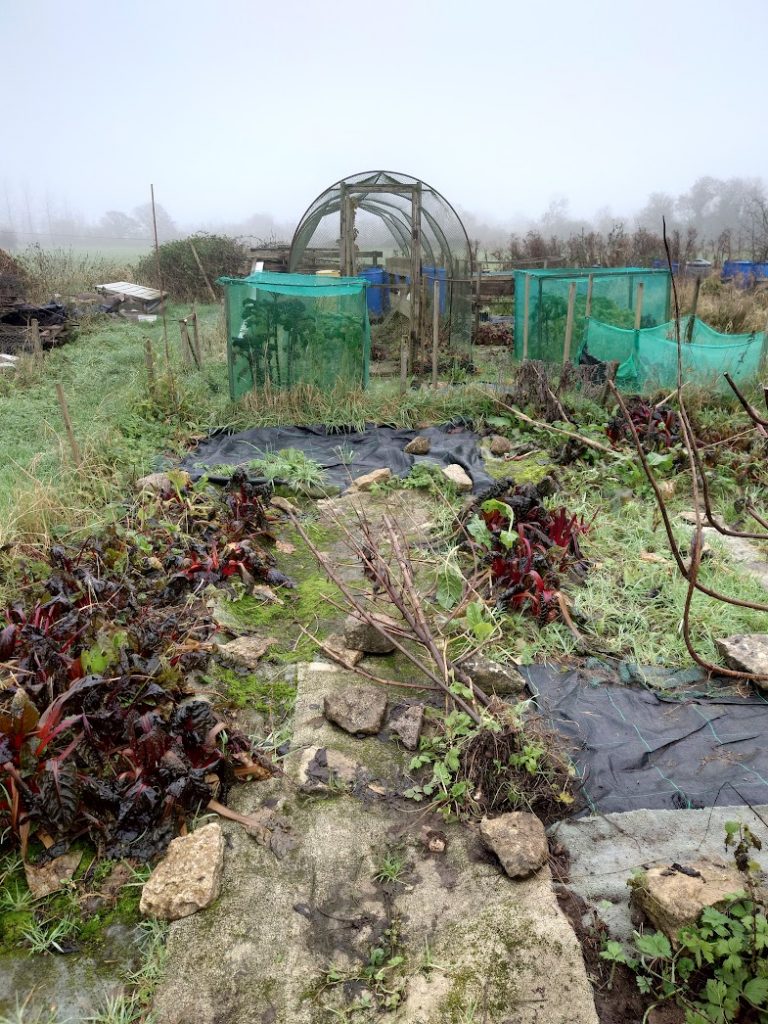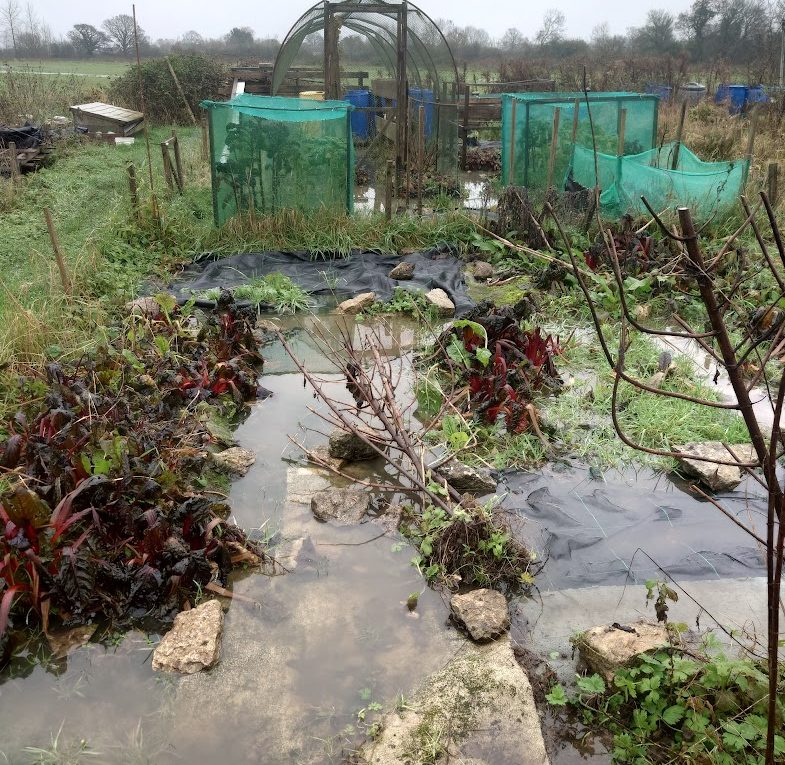Waterlogged gardens and allotments
Its been such a wet autumn and early winter with hardly any frost. As gardeners, I expect we are all hoping for some dry weather that will give our soils a chance to dry out. With so much water falling in the last couple of months, I thought I would focus a bit on how to cope with waterlogged soil.
What does waterlogging do to soil?
The key problem with waterlogging is that water fills up all the spaces around the soil particles, pushing out the air. This leads to a lack of oxygen for the plant roots and soil organisms alike, which means that they cannot respire aerobically. As a result, they soon run out of energy to fuel their metabolic processes. Soil life can cope if it’s a bit of a flash flood and the water drains away quickly. But soil that remains waterlogged for days or longer means that life in the soil will start to die, as will the plant roots. The plant becomes stressed and may die too. In time, conditions can become quite anaerobic.

The first thing, and one of the most important points is don’t walk on waterlogged soil or lawns – the weight will cause even more oxygen to be lost and the soil to be compacted which will just add to the waterlogging problems. This damage can take years to undo.
Check your plants and if leaves start to turn yellow and there is some die back, then they are suffering from waterlogging. The yellowing is called chlorosis caused by a loss of chlorophyll. This is the pigment responsible for green leaves. It’s best to remove these yellowing shoots. If it’s a valuable plant, you may want to consider lifting it and temporarily placing it in a drier spot until conditions return to normal. Another important point – plants that are stressed are more susceptible to disease, especially those caused by fungi.
With winters more likely to be wetter, it might be prudent to do some future proofing.
1. Soil structure Clay soils are the worst for waterlogging so if you have heavy clay soils, you can improve them by adding lots of organic matter. It could be your own compost, leaf mould, spent compost from pots. It acts by helping to improve the soil structure by opening up the pores. This allows more water to pass through. I don’t mix it in as I have no dig beds, so I add the compost on top and let the earthworms incorporate it.
2. Raised or mound beds, either with board or without, are good as they allow the soil to drain. The plant roots are above ground level, so if there is heavy rain they are above the level of the water or the waterlogging. But remember that raised beds are more prone to drought in the a warm summer.
3. In areas prone to waterlogging, you can plant trees and shrubs on small mound so that water runs away from the roots.
4. Most temperate deciduous trees can cope with waterlogged conditions for several weeks in winter as they are in a state of dormancy. But if the waterlogging occurs when the roots are active, then damage can be more extensive. There are plants that have coping mechanisms and will cope with waterlogging and the lack of oxygen. Willows are a good example. Shrubs such as dogwood and pyracantha cope well too. Hostas love the damp as do sedges (Carex spp.) Persicaria, and Rodgersia while one of my favourites, Rudbeckia fulgida copes well with both drought and waterlogging.
4. If you have an area that is waterlogged for long periods in winter and its on a slight slope, help by installing a simple drain. Dig out a small trench and backfill with gravel to allow water to drain away or build a soakaway but that’s a much bigger job
Remember the worms
I love earthworms and I hope you do too. Frequently described as ecosystem engineers, those species that create vertical burrows help soil structure by improving aeration and drainage. Research has shown that soil without earthworms can be 90% less effective at soaking up water. Not surprisingly, they have an important role in reducing flooding.
When soil becomes waterlogged, worms move to the surface and this makes them vulnerable to predation by birds, such as song thrushes. Tilling or ploughing brings worms to the surface too. Research shows that farmers who no-till have twice the number of earthworms in their fields as those who till. So, leave the soil as undisturbed as possible. And the same applies in gardens where digging disturbs the worms and exposed them to birds.
To encourage earthworms avoiding digging and add plenty of organic matter to the surface of the soil. You simply can’t have too many worms.




